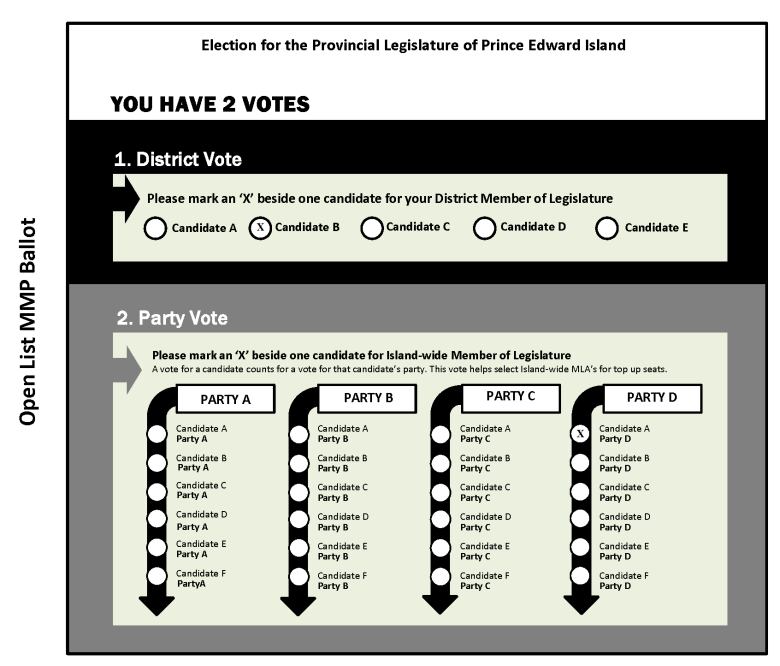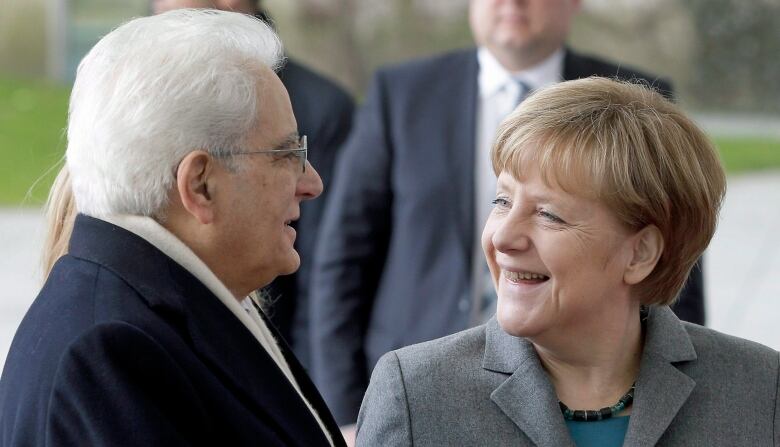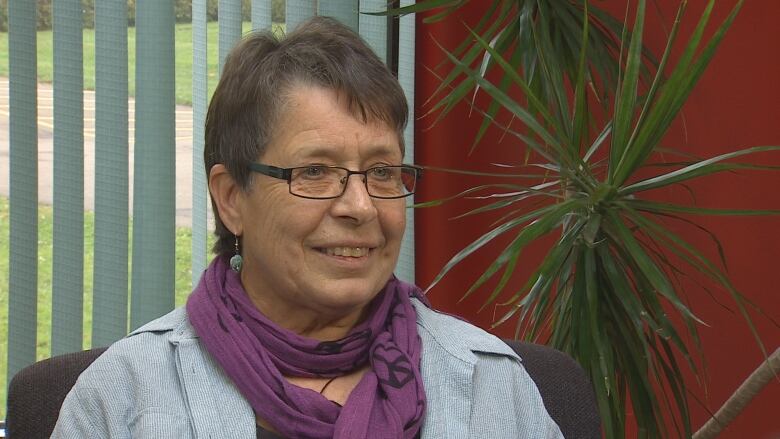Voting options: Mixed member proportional
Hybrid system combines proportional representation with first past the post

Between Oct. 29 and Nov. 7, Islanders will be asked to weigh in on electoral reform in a provincial plebiscite. This week, CBC will explain each of the five systems presented on the ballot.
Prince Edward Islanders have already been asked once if they wanted to change to a mixed member proportional model for Island elections.
The answer the first time around was a fairly resounding "no."
But the model is back as one of five options on a new plebiscite, along with a new twist which might help make it more palatable to Island voters.
How MMP works
A proportional electoral model tries to assign seats in a legislature in the same proportion as parties receive votes in an election.
Mixed member proportional is a hybrid system that combines proportional representation with the system P.E.I. is already familiar with first past the post.
Under P.E.I.'s proposed MMP model, the number of districts on the Island would be reduced from 27 to 18. MLAs in those 18 districts would be elected the same way they are now the candidate with the most votes wins.
Under the P.E.I. MMP model there would also be nine list seats for MLAs, to bring the total back up to 27. Those nine seats would be assigned to parties in an attempt to match the makeup of the House with the proportion of votes each party received in the election.
What it could mean for the P.E.I. legislature
CBC did analysis of the 2015 provincial election results and how those would look under the different voting systems being put forward in the plebiscite.
Under MMP the 2015 provincial election would have led to a House made up of:
-
11 Liberal MLAs (41 per cent of the vote).
-
10 PC MLAs (37 per cent).
-
3 NDP MLAs (11 per cent).
-
3 Green MLAs (11 per cent).
These are projections only, as different electoral systems could change the way people vote.
Voting for two candidates
Under MMP Islanders would be faced with a two-part ballot. On the first part, they would vote for their local district representative just as they do now.
On the second part of the ballot, Islanders would see lists of candidates put forward by each party. Theywould be asked to mark an "X" beside one candidate.

That second vote would be used not just to help determine which list candidates make it to the Housebut also to determine the proportion of seats for each of the parties.
This second half of the ballot contains the big change from the 2005 MMP model Islanders rejected. That was a closed-list model, meaning Islanders didn't get to choose a candidate on the second part of the ballot, only a party.
Under an open list, candidates are ranked according to the vote count. So for instance, if the formula determined three NDP list candidates were to be assigned to the legislature, as would have been the case in 2015, those would be the threethat received the most votes Island-wide.
More accountable government, says coalition
Mark Greenan was the leader of the "yes" campaign the last time Islanders considered MMP. He's involved again this time around promoting the two plebiscite options for PR with PEI Coalition for Proportional Representation.

"The biggest problem with winner-take-all politics on P.E.I. is lopsided legislatures and unaccountable governments," said Greenan.
"I think a growing number of Islanders want to see a more accountable government. They want to see our members of the Legislative Assembly empowered," he said.
"Proportional representation are the only [two plebiscite] options that are going to provide that."
Too much 'power to parties': Pat Mella
Former PC MLA Pat Mella has seen first-hand how lopsided the P.E.I. legislature can be under the current system she was the lone opposition MLA from 1993 to 1996.
But she thinks proportional representation would give too much power to political parties, particularly in the drafting of candidate lists.

"How's that all going to work in the back rooms, how's that list going to be created, who's going to be on it?" she said.
"I don't think we need to be giving more power to parties. I think we should retain the most fundamental right that people have, regardless of anything: an individual who is 18 and over can vote, and they can choose whoever they want."
More minority or coalition governments
Elections P.E.I. says, based on the experiences of other countries around the world, MMP would result in more minority or coalition governments.

But it's not clear if that would mean Islanders would head to the polls more often. Italy is often referenced as having a dysfunctional PR electoral system. Germany is often singled out by proponents of PR.
Both countries have had four national elections since 2000. Over the same period, Canada has had six.
More diverse legislature
The PEI Advisory Council for the Status of Women has endorsed MMP, saying it would lead to a more diverse legislature than the current system. Out of 27 MLAs now in the House, only four are women.

"It's not just women that are under-represented," said chair Mari Basiletti. "It's also different races, different cultures, and diverse groups such as disabled people. We have a system now that somehow blocks those people from getting involved in the government."
Basiletti says this new open list model in particular would make it easier for Island voters to choose to send more women to the legislature.
"The mixed member proportion [model] has more options for having women on the ballot."
- MORE P.E.I. NEWS | Life-changing program for veterans comes to P.E.I.
- MORE P.E.I. NEWS | P.E.I. melanoma rates highest in Canada












_(720p).jpg)


 OFFICIAL HD MUSIC VIDEO.jpg)
.jpg)



























































































